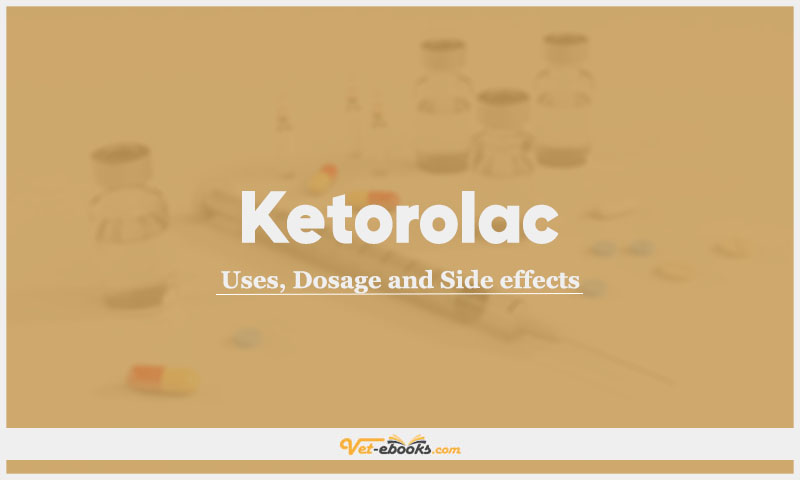Ketorolac In Dogs & Cats: Uses, Dosage and Side Effects

Overview
- COX inhibitor that reduces the production of prostaglandins and therefore reduces inflammation.
Uses of Ketorolac
- Treatment of anterior uveitis and ulcerative keratitis when topical corticosteroids are contraindicated.
- Topical NSAIDs have the potential to increase intraocular pressure and should be used with caution in dogs predisposed to glaucoma.
Dose of Ketorolac in Dogs and Cats
Dogs, Cats:
- 1 drop per eye q6–24h depending on the severity of inflammation.
Drug Dosage Calculator
You Should Give:
Side Effects of Ketorolac in Dogs and Cats
- Ketorolac may cause local irritation.
- Topical NSAIDs can be used in ulcerative keratitis but with caution as they can delay epithelial healing.
- Topical NSAIDs have been associated with an increased risk of corneal ‘melting’ (keratomalacia) in humans, although this has not been reported in the veterinary literature.
Contraindications of Ketorolac in Dogs and Cats
- No information is available.
Some Notes:
- Ophthalmic NSAIDs may be used safely with other ophthalmic pharmaceuticals although concurrent use of drugs which adversely affect the corneal epithelium (e.g. gentamicin) may lead to increased corneal penetration of the NSAID.
- The concurrent use of topical NSAIDs with topical corticosteroids has been identified
as a risk factor in humans for precipitating corneal problems.
Tip
Do You Want To Increase Your Veterinary Knowledge and Practical Skills?
You Can Now Browse and Download +3000 Books For Veterinary Professionals & Students Online.
Download Veterinary Books




















